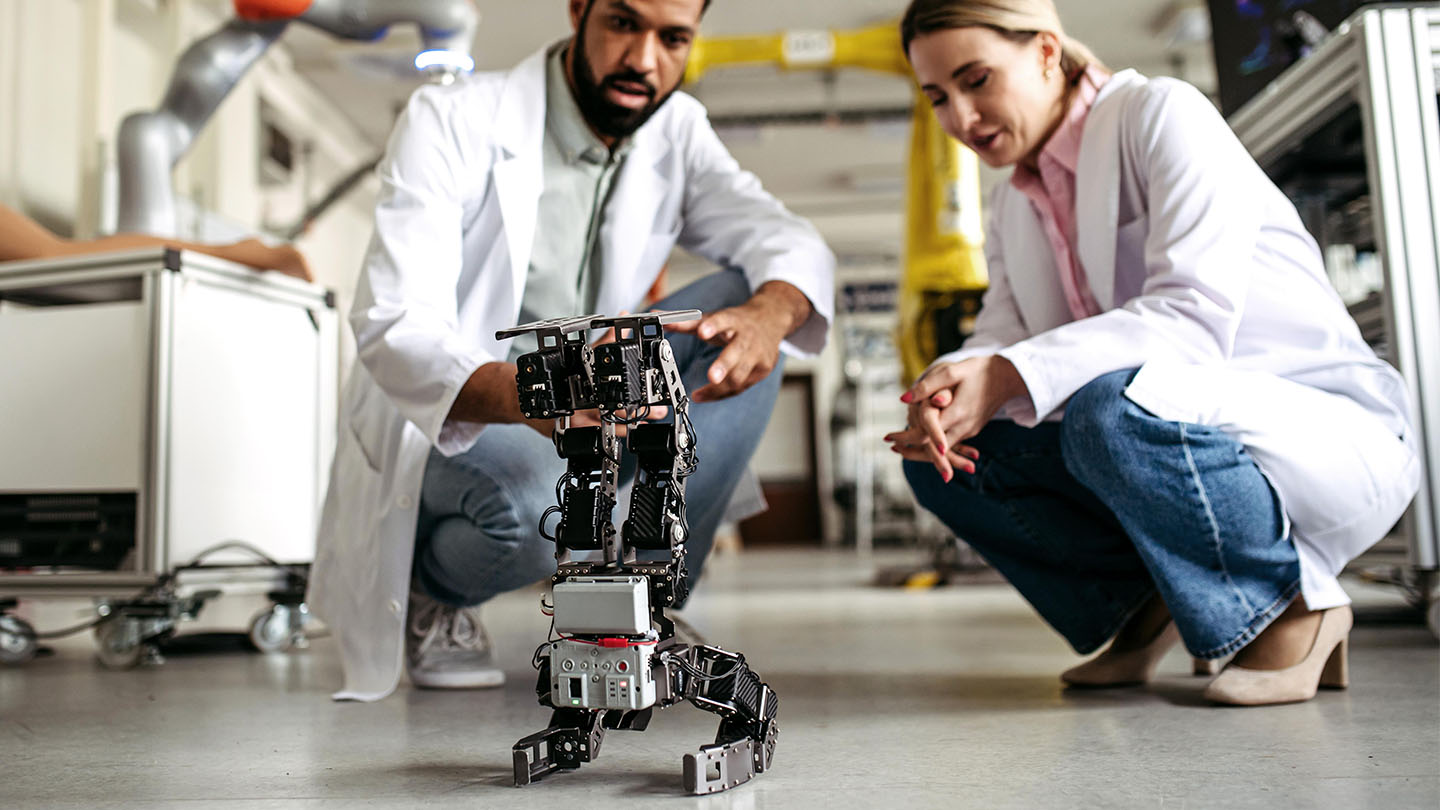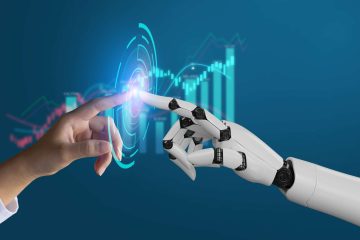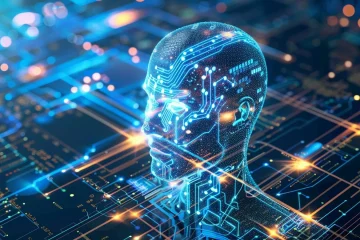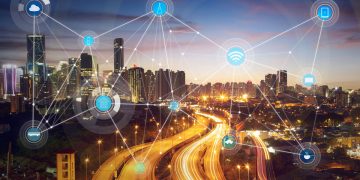The Future of Technology: Emerging Trends Shaping Our Digital World

Technology has always been a powerful force in shaping human history, but in recent years, the pace of innovation has accelerated beyond anything we’ve seen before. From artificial intelligence and blockchain to quantum computing and the Internet of Things (IoT), technology is driving significant changes across industries and societies. In this article, we explore the key emerging trends in the tech world, how they’re transforming the way we live and work, and what we can expect in the near future.
1. Artificial Intelligence (AI) and Machine Learning (ML)
AI is no longer science fiction—it’s an integral part of our daily lives. Machine learning, a subset of AI, enables systems to learn and improve from experience without explicit programming. AI powers voice assistants like Siri and Alexa, recommendation engines on Netflix and Amazon, autonomous vehicles, facial recognition, and even medical diagnostics.
The future of AI is poised to bring even more sophisticated capabilities:
-
Generative AI is being used to create realistic images, music, text, and even software code.
-
AI in healthcare is helping diagnose diseases earlier and personalize treatment.
-
AI in business improves decision-making through predictive analytics and process automation.
With responsible governance and ethical considerations, AI has the potential to greatly improve productivity, efficiency, and creativity across sectors.

2. 5G and Next-Gen Connectivity
5G technology is revolutionizing mobile connectivity, offering faster speeds, lower latency, and the ability to connect more devices simultaneously. This enhanced connectivity is crucial for the expansion of other technologies like IoT, autonomous vehicles, and smart cities.
Benefits of 5G include:
-
Streaming 4K video and virtual reality without lag
-
Enabling telemedicine and remote surgery
-
Powering industrial automation and smart grids
As 5G infrastructure continues to roll out globally, it will create new opportunities for innovation in education, entertainment, transportation, and beyond.
3. Internet of Things (IoT)
The Internet of Things refers to the vast network of physical devices embedded with sensors, software, and other technologies that connect and exchange data via the internet. From smart thermostats and refrigerators to connected cars and industrial machines, IoT devices are transforming both everyday life and major industries.
Applications of IoT include:
-
Smart homes with automated lighting, security, and climate control
-
Wearable health tech like fitness trackers and heart monitors
-
Smart agriculture with precision irrigation and soil monitoring
-
Urban development through traffic management and energy optimization
However, the growth of IoT also raises security concerns, as more connected devices increase the potential for data breaches and cyberattacks.
4. Blockchain and Decentralized Technologies
Blockchain technology, best known as the foundation of cryptocurrencies like Bitcoin and Ethereum, is gaining recognition beyond finance. At its core, blockchain is a decentralized digital ledger that ensures transparency, security, and immutability.
Key use cases include:
-
Cryptocurrencies and digital wallets
-
Smart contracts for automated agreements
-
Supply chain tracking and authentication
-
Decentralized finance (DeFi) applications
Blockchain has the potential to eliminate intermediaries, reduce fraud, and provide secure solutions across sectors such as healthcare, logistics, and legal services. As regulation matures, more real-world applications will emerge.
5. Cloud Computing and Edge Computing
Cloud computing has become the backbone of the digital economy, enabling on-demand access to data, applications, and infrastructure over the internet. Companies like Amazon Web Services (AWS), Microsoft Azure, and Google Cloud provide scalable solutions for businesses of all sizes.
Edge computing is an extension of cloud computing that processes data closer to the source—at the “edge” of the network. This reduces latency and bandwidth usage, making it ideal for time-sensitive applications like autonomous vehicles, industrial robots, and remote surgeries.
Together, cloud and edge computing are helping businesses increase agility, reduce costs, and deploy new technologies faster.
6. Cybersecurity in the Age of Digital Transformation
As businesses and individuals become more reliant on digital systems, cybersecurity has become a critical concern. Cyber threats—ranging from data breaches to ransomware attacks—are becoming more frequent and sophisticated.
Emerging trends in cybersecurity include:
-
AI-powered threat detection that identifies anomalies in real time
-
Zero Trust Architecture that assumes no user or device is inherently trustworthy
-
Biometric authentication like facial and fingerprint recognition
-
Quantum-resistant encryption to counter future quantum computing threats
Investing in cybersecurity is no longer optional; it’s a necessity to protect data, assets, and reputation in a hyperconnected world.
7. Quantum Computing
Quantum computing represents a massive leap forward in computational power. Unlike classical computers, which use bits (0 or 1), quantum computers use qubits that can exist in multiple states simultaneously.
Though still in early development, quantum computing has the potential to:
-
Solve complex problems in seconds that would take classical computers years
-
Revolutionize drug discovery and material science
-
Optimize logistics, financial modeling, and weather prediction
Companies like IBM, Google, and startups such as Rigetti and IonQ are racing to develop scalable quantum systems. As the technology matures, its impact will be felt across industries.
8. Robotics and Automation
Robotics is advancing rapidly, especially with AI integration. Robots are being used in manufacturing, healthcare, agriculture, and even customer service.
Examples include:
-
Autonomous drones for surveillance and delivery
-
Surgical robots that perform minimally invasive procedures
-
Warehouse robots used by Amazon and other logistics firms
-
Humanoid robots being developed for caregiving and companionship
Robotic process automation (RPA) is also transforming business operations by automating repetitive tasks, reducing human error, and increasing efficiency.
9. Tech in Education and Remote Work
The COVID-19 pandemic accelerated the adoption of remote work and digital learning technologies. Platforms like Zoom, Microsoft Teams, Google Classroom, and Slack have become essential tools.
Future trends include:
-
AI tutors and adaptive learning platforms
-
Virtual reality (VR) classrooms and immersive experiences
-
Cloud-based collaboration across time zones
-
Increased demand for digital skills and tech certifications
The shift toward hybrid models—combining in-person and digital experiences—is likely to continue as organizations embrace flexibility and scalability.
10. Sustainability and Green Tech
Technology is also playing a key role in addressing environmental challenges. Innovations in green technology are helping reduce carbon emissions, conserve resources, and promote sustainable practices.

Examples include:
-
Smart energy systems for homes and cities
-
Electric vehicles (EVs) and charging infrastructure
-
AI-driven climate modeling and weather forecasting
-
Blockchain for transparent carbon credit trading
The tech industry itself is striving to become more sustainable, with major firms committing to carbon neutrality and reducing e-waste.
Conclusion: A Tech-Driven Tomorrow
The future of technology is not only about faster devices or smarter software—it’s about reshaping how we live, work, learn, and connect. As we embrace innovations like AI, 5G, IoT, and quantum computing, we must also address ethical, environmental, and social implications.
Tech leaders, policymakers, and consumers all have a role to play in ensuring that technology serves humanity, drives progress, and builds a more inclusive, secure, and sustainable world.
In a world that’s evolving faster than ever, staying informed and adaptable is the key to thriving in the tech-driven era ahead.






















